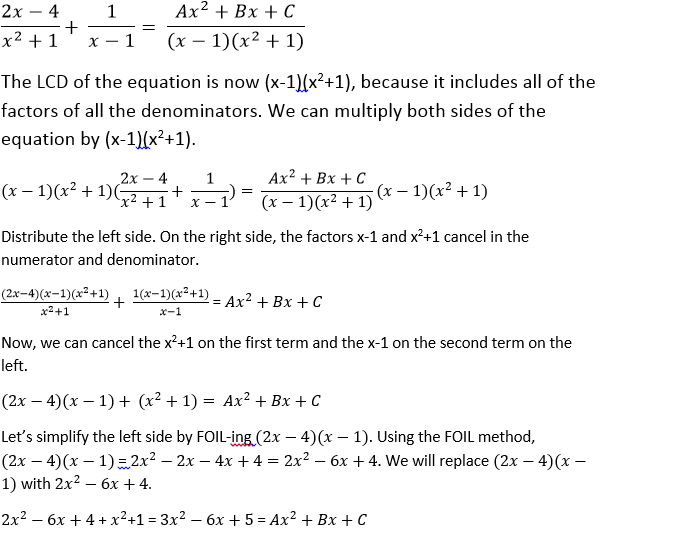All GRE Math Resources
Example Questions
Example Question #52 : Algebra
Quantity A:
Quantity B:
The relationship cannot be determined.
The two quantities are the same.
Quantity A is greater.
Quantity B is greater.
Quantity A is greater.
To solve this problem, expand each function described by Quantities A and B:
Quantity A:
Quantity B:
Now note that Quantities A and B only differ in that Quantity A is greater by 
Since we are told that 


Example Question #51 : Algebra
Quantity A:
Quantity B:
The two quantities are equal.
The relationship cannot be determined.
Quantity B is greater.
Quantity A is greater.
Quantity A is greater.
Rather than manually finding common denominators and adding the fractions together, realize that
Since
Quantity A must be greater, and this can be seen without actually calculating its value.
Example Question #52 : Algebra

Approximately, what was the percent growth of Beetleton's GDP from 2009 to 2010?
Percent growth is given as:
For Beetleton, this can be expressed as (in terms of billions of US dollars):
Example Question #55 : Algebra
The sum of two integers is 

Let us write down what we are told in mathematical terms, designating the smaller integer as 

The sum of the two integers is 
And the larger integer is 
Writing the first equation in terms of 
Which allows us to find 
Thus, the positive difference between the two is found as
Example Question #52 : Gre Quantitative Reasoning
–2
–1
2
1
0
2
Example Question #53 : Gre Quantitative Reasoning
–b/(m + 1)
–b/(m2 – 1)
–bm/(m2 + 1)
bm/(m2 + 1)
b/(m2 + 1)
b/(m2 + 1)
Example Question #1 : How To Find The Solution To A Rational Equation With Lcd
In the equation below, 





Example Question #1 : How To Find The Solution To A Rational Equation With Lcd
Four less than three times a certain number is equivalent to five plus four times this same number. What is three less than three times this number?
The answer cannot be determined from the information given.
The key to solving this problem is deciphering the language and translating it into a numerical representation. The first part can be written as an equaltiy as follows:
Rearranging terms allows us to solve for this mystery number:
From there we can address the problem's question:
Example Question #51 : Algebra
The arithmetic mean of 



Quantity A: 32
Quantity B: The arithmetic mean of 
The relationship between Quantity A and Quantity B cannot be determined.
Quantity A is greater.
Quantity B is greater.
Quantity A and Quantity B are equal.
Quantity A and Quantity B are equal.
The definition of an arithmetic mean of a set of values is given as the sum of all the values divided by the total count of values:
Where 


Quantity B can thus be defined as follows:
Which simplifies to:
or, simplifying:
We are told that the mean of 




and then as
Plugging this value into our definition of Quantity B, we can find its numerical value:
So
Example Question #3 : How To Find The Solution To A Rational Equation With Lcd
Satoshi and Reginald are bottlecap collectors, and Satoshi has 46 more bottlecaps than Reginald. If they were both to receive 6 bottle caps each, Satoshi would have three times as many bottle caps as Reginald. How many bottlecaps does Satoshi have?
The mathematical approach to this problem would be to set up a system of equations; one which represents the current relationship of Satoshi's and Reginald's number of bottle caps:
And one which represents the relationship 6 bottle caps later, wherein Satoshi would have three times as many bottlecaps as Reginald:
Subtracting the first equation from the second equation provides:
Which simplifies to
Solving this yields the value for Reginald's number of bottle caps, which is 17, which can be plugged back into the very first equation to find Satoshi's number of bottle caps, which is 63.
There is, however, another way to find this solution, which is by first looking at the answer choices.
Since we know that Satoshi's number of bottlecaps plus six must be divisible by 3 (since it is three times Reginald's new number of caps), we can quickly eliminate the choices 86, 143, and 52. Furthermore, since Satoshi has 46 more bottlecaps than Reginald, it'd be impossible for him to have 21 bottlecaps. This leaves only the 63 option.
When taking standardized math tests, where time management is key, it can be helpful to look for quicker ways to find a solution, such as back-solving, rather than just solving the problem normally.
All GRE Math Resources






































































